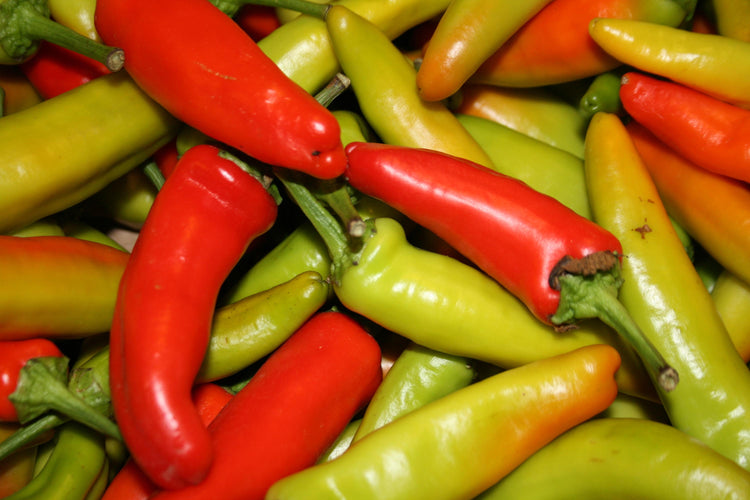
The Cubanelle pepper may be classified as a sweet pepper type, but often this chili has a slight hint of heat to it. It is also known as the Italian frying pepper. Cubanelle translated, means “little cuba” and is a popular pepper in the Carribean. It produces an abundant amount of sweet shiny peppers that curve slightly resembling the shape of a bull’s horn. Peppers start off green and mature into a brilliant deep red. Peppers average between 20-25 cm (8-10”) long and are quite thick at the shoulders; 6-8 cm (2½-3”) wide.
Growing Instructions:
Start seeds indoors 8-10 weeks before the last expected frost date in your area. Plant in well-draining soil in a warm, sunny location after the danger of frost has passed. Space plants 30-45cm (12-18”) apart. Peppers prefer slightly acidic soil with a pH of 6.0-6.8. Fertilize with a balanced fertilizer once a month during the growing season. Water regularly, making sure the soil stays moist but not waterlogged. Harvest peppers when they reach full size and have reached their mature color.
Soil Conditions: Well-drained soil. Soil pH: 6.0-6.8. Planting Depth: Start seeds indoors 8-10 weeks before the last expected frost date in your area. Germination: 7-14 days. Height at Maturity: 30-90cm (12-36”) tall. Days to Maturity: 60-100 days. Watering: Keep soil evenly moist. Sun/Shade: Full sun. Spacing after Thinning: Space plants 30-45cm (12-18”) apart.
